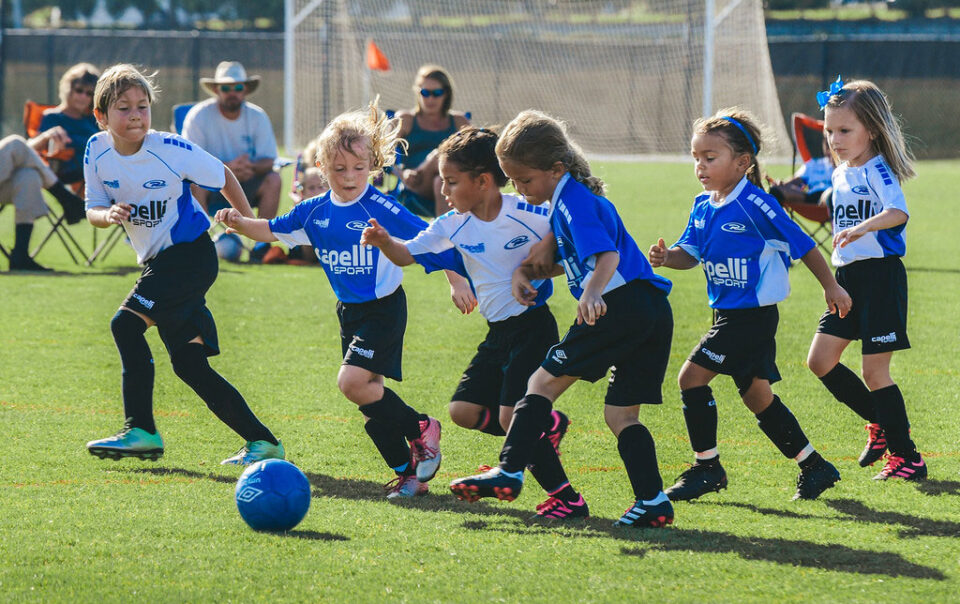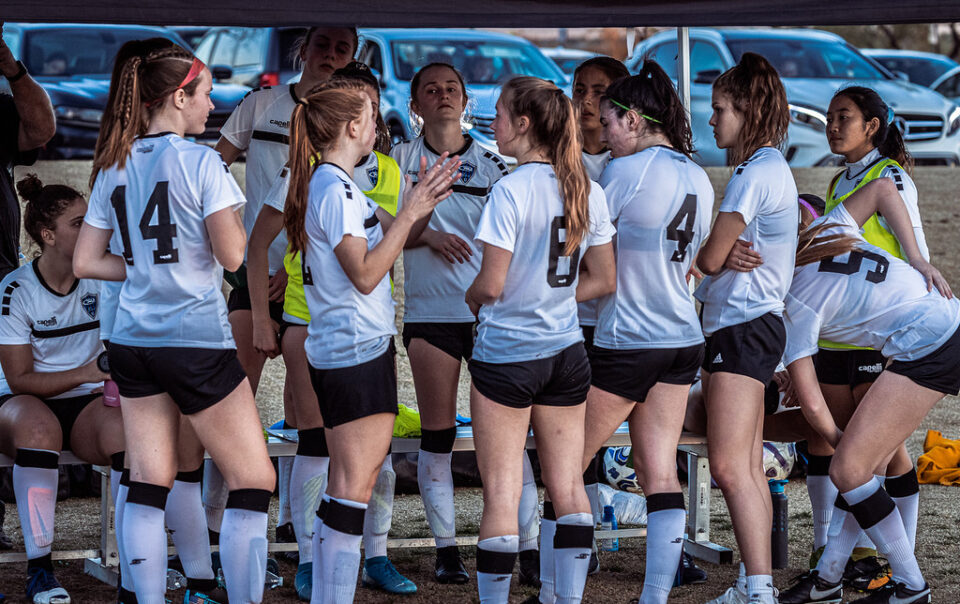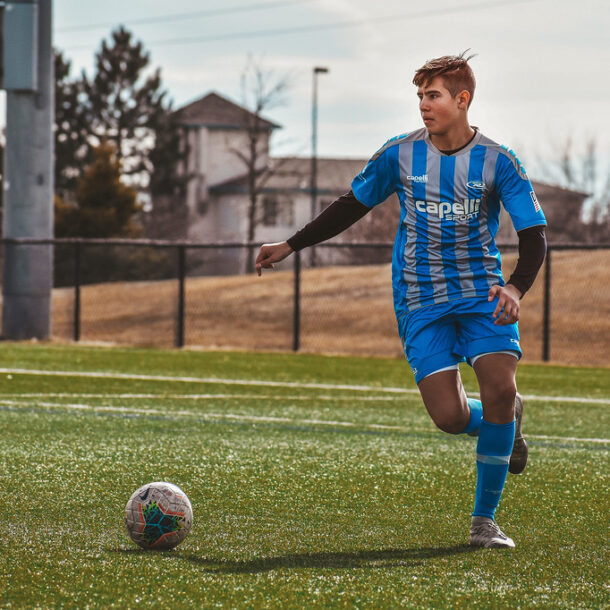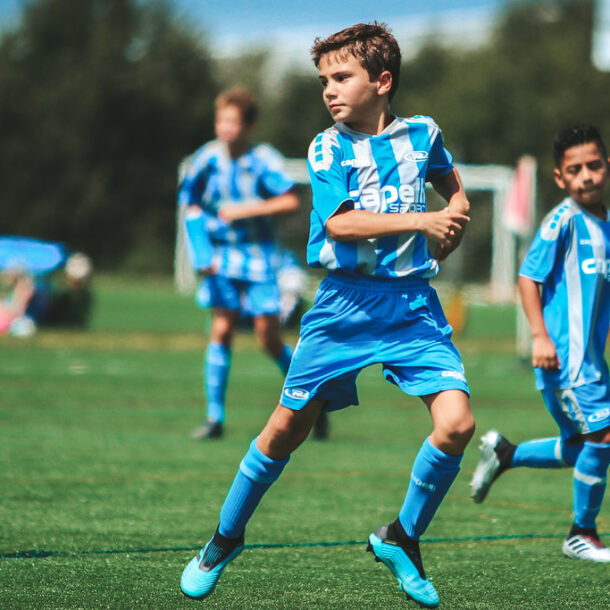
*Clicca qui per leggere la versione italiana di questo documento – The Rush Way Youth ITALIA
*Clique aqui para ler a versão portuguesa deste documento – The Rush Way Youth (Português)
THE RUSH WAY AGE GROUP GUIDES
The Rush Way Age Group Guides provide a more in depth look at Rush Soccer’s Developmental Blueprint, covering technical, tactical, physical, and psychosocial considerations, as well as guiding on how to apply Rush Way philosophies effectively to each age group.
THE RUSH WAY PHILOSOPHY
The Rush Way is the embodiment of all that is Rush Soccer; the rules and manner in which Rush members hold themselves and how they expect other Rush members to conduct themselves. This is not inherent in all people, but can be learned. The Rush Way encourages passion, leadership, respect and, above all, quality. Before reading this document and complementary to any age group curriculum, every coach should read the entire Rush Way Philosophy.
Formation: At the 9v9 level, the formation 1-2-4-2 presented below also favors a smooth transition onto the 1-3-5-2 utilized for our 11v11 teams, by once again displaying a similar shape and function for all roles and already introducing the role of the attacking midfielder.
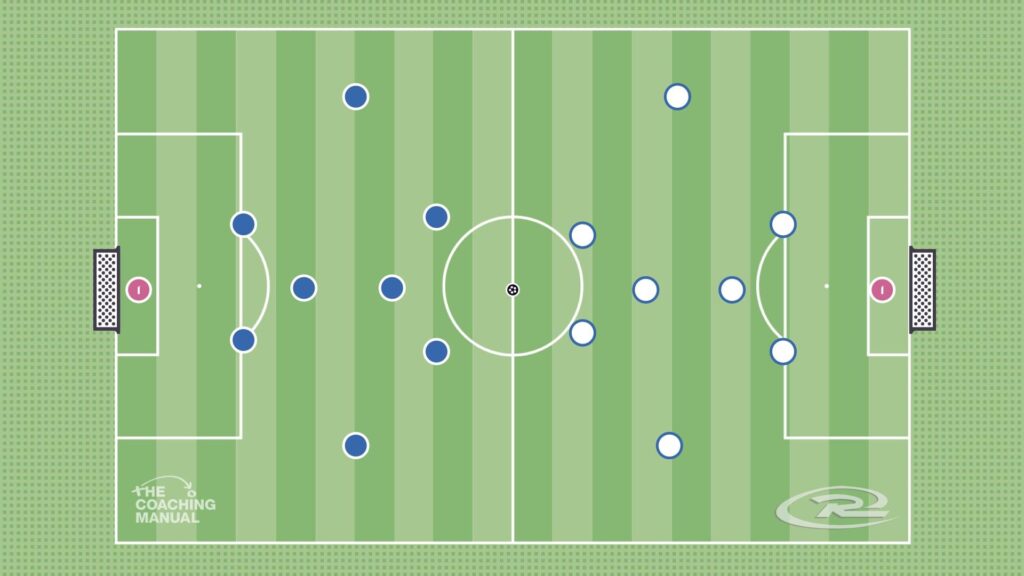
Set Pieces: We recommend to frequently use the following schemes to play out of the back and defend corner kicks. Vary to other schemes as well, especially for players to learn both zonal and man to man marking (in corners) and to play long in goal kicks. These are simply presented to favor an easy transition to the 11v11 scenarios.
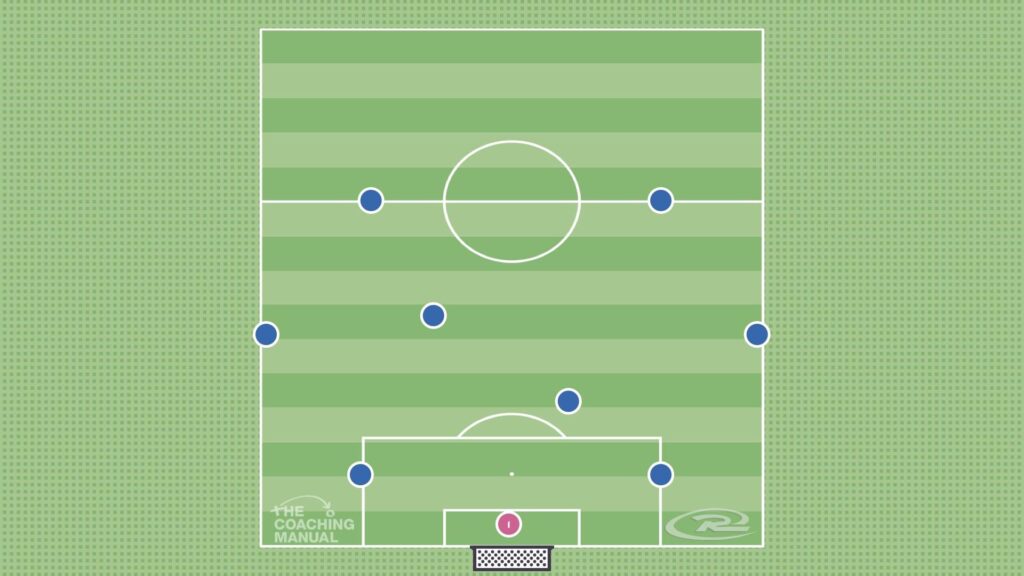

6-3-1: The 6-3-1 philosophy is in place to ensure that all teams are progressing and improving consistently, as well as experiencing the emotions of winning and losing through manipulating six wins, three losses and one tie throughout the year. If a team is winning all the time, they are encouraged to schedule a scrimmage against tougher competition to be sure they are being pushed. Likewise, if a team is in a losing slump, then a scrimmage is encouraged against an opposition that they should beat, to regain a positive attitude, develop a goal scoring mentality and create confidence in defense.
Core Values: There are 11 players on the field and so Rush Soccer has 11 core values as well. At these age groups, our players, coaches, and supporters should focus on nine of the 11 core values as highlighted below:
- Accountability
- Advice
- Empathy
- Humility
- Enjoyment
- Leadership
- Passion
- Respect
- Safety
- Tenacity
- Unity
Player Position: Rush believes that under the age of 14, every player should have the opportunity to experience different positions on the field. Players should not be stereotyped into specific positions because of speed, size or other qualities, but should experience the emotion and functions of all positions on the field. These experiences allow them to advance their soccer knowledge, raise their technical ability, and gives them opportunities to think as a field player, all of which raise the level of their position-specific demands.
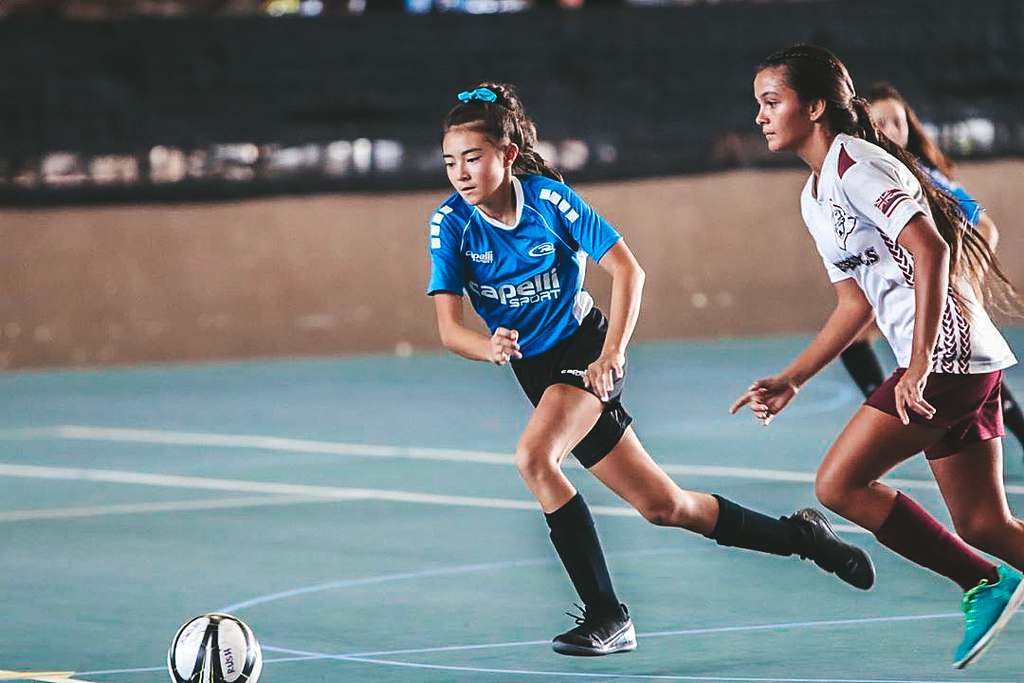
70 Games & Playing Time: Playing time for any individual is completely at the coach’s discretion. Rush encourages that playing time at all levels should be equal throughout the season. At the younger developmental ages, players should be exposed to as much of the game as possible. Limiting team roster size will aid in increased playing time for all players. Remember the spirit of the 70 Games Philosophy stated at The Heart Of The Rush: One of the main objectives of a Rush club must be to provide opportunities and environments for the players to elevate the overall number of playing hours as much as possible.
Substitutions: When possible and regardless of the state of the game, all players should exchange courtesy with their replacement. This will promote team spirit and give confidence to the players entering the field.
Pre-game / Warm Up Routines: For this age group, the Rush Way suggestion is to take the warm up opportunity to review a concept trained during the week on a quick activity. By the higher end of the age group, you’ll find pre and post pubertal players, what represents the most complex part to administrate as their bodies experiment many changes. We’ll explain in further detail below, but it is important to mention this as post pubertal players do need to warm up from a biological point of view, what was not needed in the younger age groups.
During the Match: Games are a great coaching opportunity, but caution, don’t over do it. Coach actively but don’t misunderstand that with constant narrating and interventions. Actively means engaged. Make sure your coaching is positive and builds confidence, like stated in the Rush Blue Thread, and make most of your comments when off the ball and preferably in natural stoppages.
Half Time: Rush encourages players to analyze problems and discuss solutions on their own before coach intervention. Players should be given a couple of minutes away from the coaching staff to voice opinions and discuss solutions. The coach should then bring their views and knowledge to the group. The Rush Way expects our coaching to be positive and build confidence, like stated in The Rush Blue Thread.
Post Game: Once again, the Rush Way expects our coaching to be positive and build confidence. You can use the 4:1 approach as a tool. Take the opportunity to promote core values like Humility & Respect when winning, and Tenacity & Unity when losing.
Greeting: Players are expected to greet the staff with a handshake for all local, national and international staff. The Rush staff across the country expect their players to shake their coaches hand each time they meet. Why?…respect, build social skills, break down barriers, learn culturally accepted behavior, the list goes on.
Practice and Game Attendance: Is optional for all levels of player within the Rush Organization. Playing other sports and multiple sports at the same time is the choice of the family and zero repercussions should be administered by the coaching staff. Players who wish to become better and succeed within the game will attend all practices and games with the attitude of wanting to leave a better player. This is a reflection of our core value Accountability. The Rush Tutor Program promotes and encourages players who wish to push themselves the opportunity to practice with any other team within the club on any given day.
Acknowledgement: When a coach addresses a player during training or competition, it is important the player acknowledges. Communication is two-way.
Player First, Team Second: Similar to the European youth club structure, Rush encourages the player to be first before his or her individual team. For example, we encourage:
- The player to play with the adult team before his own team’s game.
- The player to train with older, experienced teams in place of his own teams.
- The player to guest play with an older team in place of their own game.
This enables players to be comfortable playing on teams that are in line with their ability regardless of age but based on performance in training and game days. Players are encouraged to train with higher level teams to accelerate their development.
Team Photos: The Rush has a certain style of their pictures, learn it and apply it. Take a photo of your rotating starting 9 or 11, and a whole team picture to promote Unity.
R.E.A.C.H.: All players should be aware of the R.E.A.C.H., Rush Equipment Assisting Children program and understand the importance of social responsibility. In a nutshell, this program provides the opportunity for our players to turn in their old uniform in order to donate to our less fortunate Rush clubs and players around the globe.
Coaches’ Sideline Behavior: From the outside, the conduct of the coach on the sideline can be perceived as a reflection of the conduct of all coaches within Rush Soccer. Coaches are a reflection of their players and should conduct themselves with respect for the officials, the opponents and the game of soccer. Remain positive when at all possible but motivational throughout. Coach actively but don’t misunderstand that with constant narrating and interventions. Actively means engaged. Education and being a first class role model are the paramount reasons that a coach has been given the honor to coach for Rush. It is always important to remember this.
Parents’ Sideline Behavior: Rush parents are expected to be positive, motivational and supportive to all players and officials. Learning the Rush chants is encouraged. Parents are expected not to coach from the sidelines but enjoy the experience of the game.
Players’ Sideline Behavior: Players are encouraged to support other Rush teams and give their full-hearted support. Learn the Rush song; be as loud but respectful as possible and help educate the rest of the country in the way soccer should be supported, as it is in the rest of the world.
Risk Management: Accepting a coaching position means accepting responsibilities. Exercise reasonable care, have a first aid kit, take a CPR course, as well as make sure every player departs with their parents or designated individuals, never leave a player alone after practice, among others.
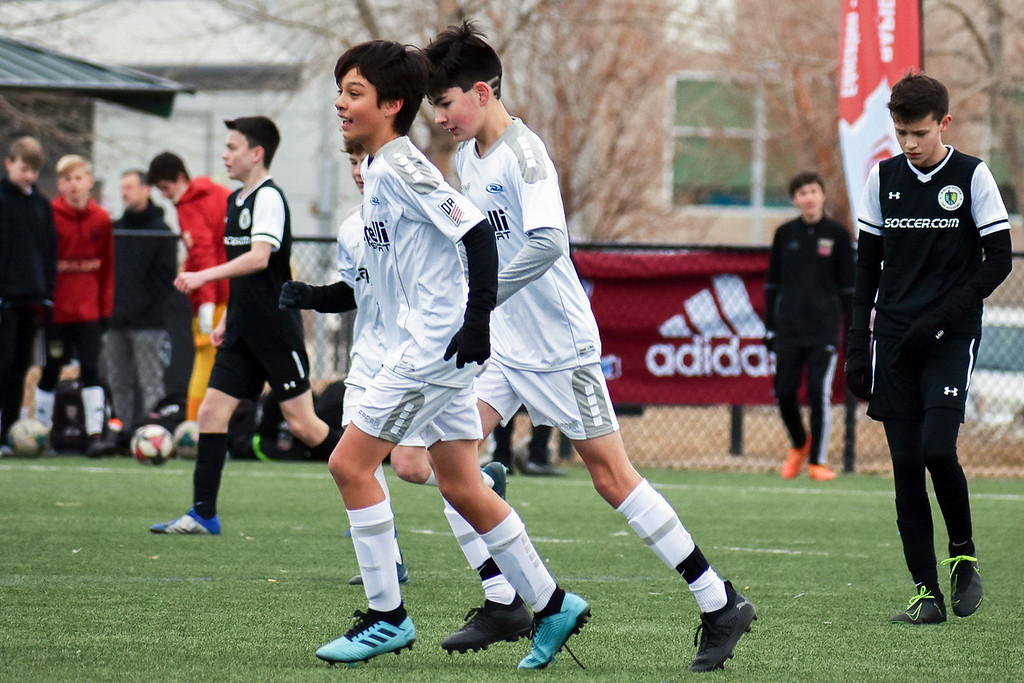
The Rush Blue Thread
In Soccer as in life, most things are not black or white and common sense can’t be replaced. Exceptions aside, the Rush Blue Thread pursues the application of the following eight principles at all levels and ages. Rush Soccer has a player centered approach.
- The coach uses conditions to encourage competition.
- There is an ongoing cycle of feedback and reflection between the coach and the player.
- Each activity contains decision making elements.
- The design of the season, week, and training session meets the needs of the players and teams.
- Coaching points are based on visual cues.
- The ball is rolling at least 70% of the time in the session.
- A minimum of 75% of the session is game based and opposed.
- Coaching is positive to encourage and build confidence.
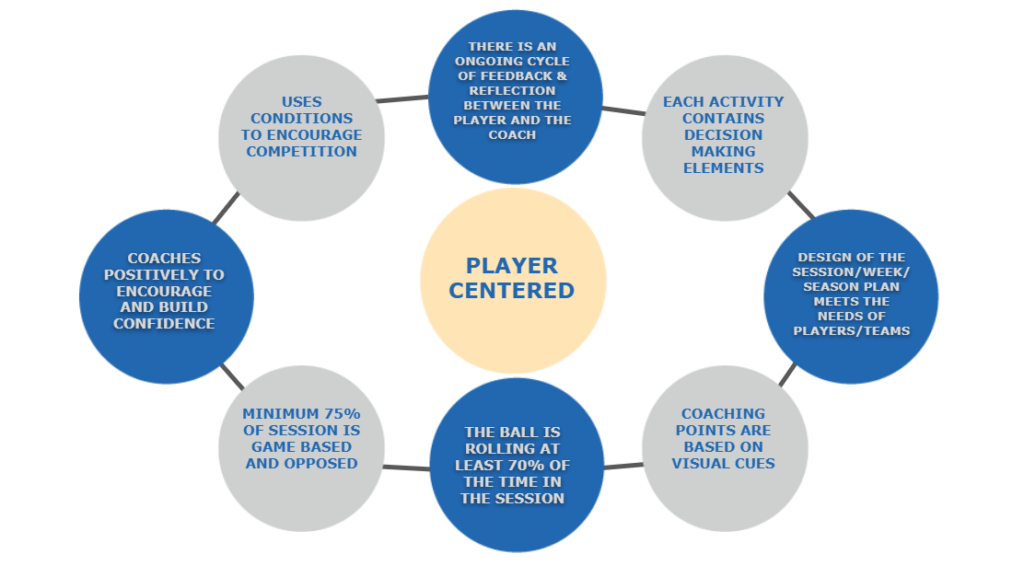
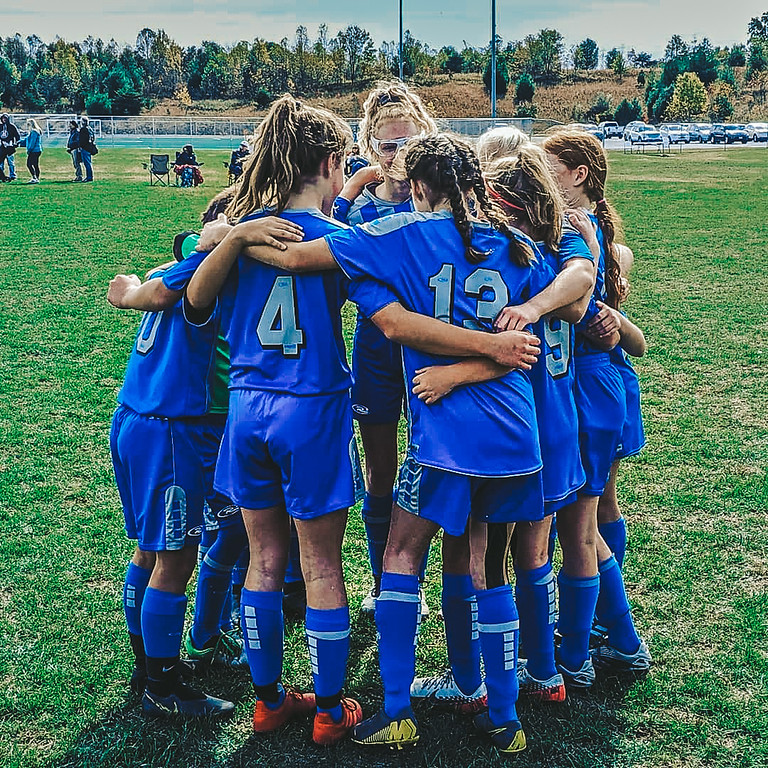
THE RUSH WAY: U11-U13 YOUTH DIVISION
OBJECTIVE: Sustain A Focus On Technical Development While Gradually Increasing The Tactical Component And Supporting The Players As They Start And Go Through The Maturation Process.
Age Group Coaching Approach & Psycho-Social Considerations: We’ll repeat this same statement for all age groups: When you coach a team or a player, the most important thing is always to understand who you are coaching.
By this stage, we encounter players that are elevating their capacity to understand abstractions and hypothesis, progressively as they reach the higher end of the age group. Their span of attention also increases considerably. This growth should correlate with the introduction of more advanced tactical concepts. The focus on these is still relegated by the technical aspects but distances between the two are shorten as they grow.
A vital aspect to coach this age group relies on a deep understanding of the biological age of the players, which might defer vastly from their chronological age. Therefore, coaches might find players that enter pubertal stages years before some of their teammates. This creates a complex situation for both the groups of players that grow early and those that grow late. Women normally go through puberty earlier than men.
It is frequent to find players that have grown a lot in a short period of time. This growth is not always organized, what might result not only in the new adolescent suffering from physical aches and a declining coordination (they seem to be “clumsy”), but this also might generate a lot of stress on the player that’s encountering a new, different body, as well as experiencing multiple hormonal changes.
It is not easier for the players that grow late, who tend to find themselves feeling behind, and physically weaker that their teammates.
The coach role is crucial in this stage to support them through this period, from all soccer, physical, and psychological points of view.
From a Soccer standpoint, the early ones might find physical advantages in their games and over-relay on them, depriving the development of other skills. This is a problem as the “advantage” is not sustainable over time when the late group catches up. A common case that exemplifies this is a player that becomes much faster athletically than his teammates so relies on solving 1v1’s by playing long balls into space and running, instead of developing better dribbling skills. A good solution for the coach is to have this player practice frequently with older teams in which he doesn’t count on these advantages, so as to find himself/herself in need of developing alternative solutions.
For the late group, it is important to support the player and help him/her recognize that the disadvantages he/she is experiencing are only temporary and not purely soccer related, but rather physical.
It is also fundamental that the coach distinguishes between real skills and this temporary physical advantage. Phenomenons like the relative age effect, that has shown that players born in the first quarters of the year have higher rates of success and continuity in their youth careers suggest that coaches tend to pick these players for their teams by confusing real skills with physicality derived from early maturation.
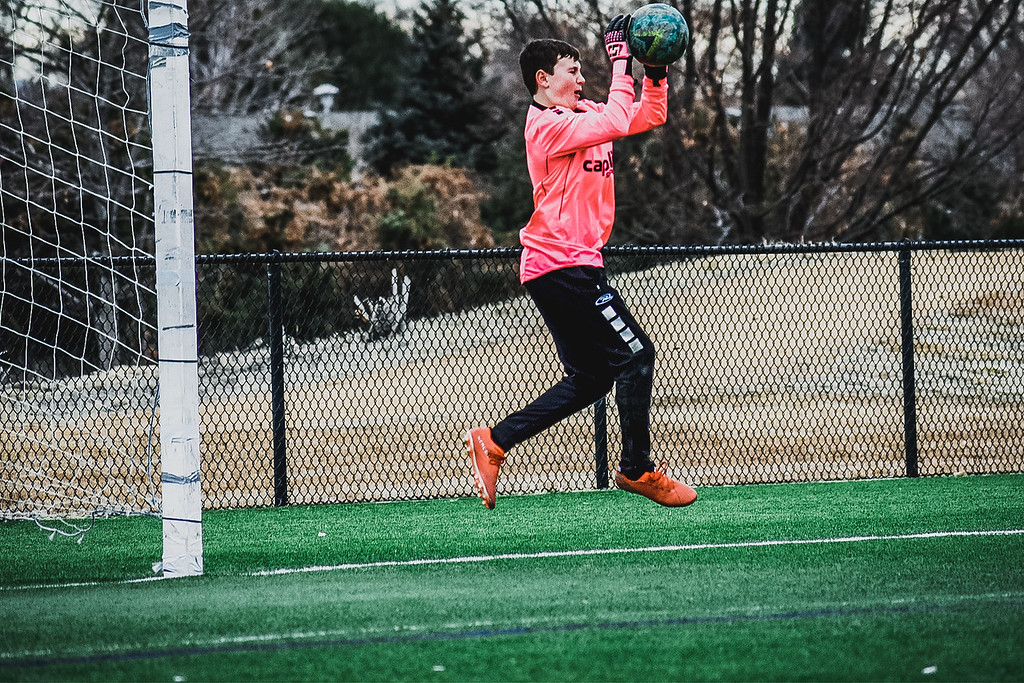
From a Physical standpoint, the key for the coach is to understand that he/she is dealing with two different biological stages. Post pubertal players should warm up and can already perform long aerobic and lactic anaerobic training with effective results, what is discouraged for pre-pubertal groups, as it was explained on the previous age groups. However, and as mentioned above, the players that are facing rapid changes normally feel “disorganized”, what suggests training with a focus on their coordination, balance, agility, and reaction. Maximal strength should not be trained (apart from being irrelevant for the sport), only explosive strength and closer to the upper end of the age group.
As always, try to be as soccer specific as possible when you train these valencies.
From a Psycho-Social standpoint is important to pay attention to them and support them through these changes. It is frequent to observe mood changes. These players, especially the early group, enter into their adolescence, that is a complicated stage characterized by insecurities, sensitivity, a constant search and discovery of one’s personality and in which our teammates and coaches have a strong influence on us. This highlights the importance of coaching positively.
From a Technical standpoint, all the technical gestures can be trained, always following your local soccer federation regulations about heading.
From a Tactical standpoint, as this component increases it’s participation over the ages involved, the players evolve into collaborating in larger numbers, normally being effective in groups of threes and fours, what favors the progression into soccer concepts associated to lines (defenders, midfielders, and forwards).
Recommended activities: To learn small groups and lines concepts, games in relevant numbers like 3v3, 4v3, 3v4, 4v4, 5v4, or 5v5 are great, with scrimmages in the numbers they’ll experience during competition (9v9, or 11v11).
Preferred Training Methodologies: Small Sided To Extended Sided, or Analytical to Global can be good approaches in these age groups if well applied, and can even be combined with some eventual OLI sessions (Orientation, Learning, Implementation) by U13, once they play full sided. For the second method, we recommend to focus on the global stages, only using analytical activities for short periods of time and preferably at the beginning of the session. Remember the principle from The Rush Blue Thread: We want at least 75% of the session to be game based and opposed. Always avoid having analytical stages as the core of your session.
Highlight The Core Values Safety, Passion, Humility, Accountability, Respect, Tenacity, Unity, Empathy, and Enjoyment!
Meeting Parents
Empathy is one of Rush Soccer’s core values, and we believe it requires little empathy to understand parents’ love for their children and their desire to stay involved. That doesn’t mean parents they know exactly how to be involved. Talk to them, guide them, present this curriculum before the star of the season and explain what you will do and why you will do it. Give them feedback and be open to listening to their concerns. Share expectations and use “we” rather than “I”. Parents and coaches need each other to optimize the development and experience of the players.






